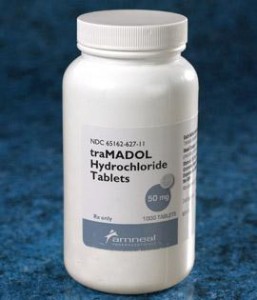A couple of things you might not have known about prescription painkillers
There are millions and millions of people all over the world that are taking advantage of everything that prescription painkillers such as cocodamol 30/500 have to offer, with millions more around the world likely to have to take advantage of these pain pills at some point or another during the year as well.
To say that we as a global population are hooked on pain pills would be the understatement of the century.
 While these are amazing medical breakthroughs have definitely helped individuals all over the planet to better curb the significant pain that they may be dealing with at any point in time, they also open up a world of dangerous (and sometimes deadly) side effects that cannot be ignored. When used appropriately, individuals usually will be able to effectively manage any and all pain that they might be contending with…
While these are amazing medical breakthroughs have definitely helped individuals all over the planet to better curb the significant pain that they may be dealing with at any point in time, they also open up a world of dangerous (and sometimes deadly) side effects that cannot be ignored. When used appropriately, individuals usually will be able to effectively manage any and all pain that they might be contending with…
… But when used incorrectly, things can really run off the rails in a hurry.
This is why you need to know exactly what you’re getting into when you decide to buy prescription painkillers. If you are to have any success whatsoever using these medical interventions to provide you with the results you’re after, you need to be 100% certain that they are the right move for you at this particular point in time.
To help you determine this, you’ll want to pay close attention to the inside information we break down below.
Shall we begin?
Prescription painkillers aren’t well-suited to long-term pain management
Opioid pain pills in particular are going to be able to produce stunning short-term pain relief results for those that are fighting off acute or significant pain, but they aren’t going to be able to stand up against long-term pain, chronic pain, or consistent pain and all of its side effects. So before you buy codeine or some similar opioid you need to think twice to make sure it is the right think for you, and of course counsult your doctor.
Sure, you might be able to block out the sensation of pain for at least a little while using these prescription pain pills, but you aren’t going to be able to eliminate the fogginess, the nausea, the constipation, and the other “off sensations” you are most definitely going to have to contend with when dealing with any number of medical conditions.
On top of that, over time these solutions become less and less effective at providing effective pain management results. They just aren’t suited for long-term situations.
Leftover pain pills can pose a significant health risk
 Individuals that have built up a is a tolerance against prescription painkillers (which isn’t all that difficult to do when using them over a long period of time) always run the risk of “overdosing” until they feel the impact of these pain pills once again – and many of them turn to leftover drugs to help supplement their current prescription.
Individuals that have built up a is a tolerance against prescription painkillers (which isn’t all that difficult to do when using them over a long period of time) always run the risk of “overdosing” until they feel the impact of these pain pills once again – and many of them turn to leftover drugs to help supplement their current prescription.
This is a disastrous proposition.
Not only is it a terrible idea to take anyone else’s pills, but it’s also a terrible idea to “mix and match” prescription drugs – even if they are the same pill. You never know exactly what a particular dosage is, and you never know how the degradation of a particular pain pill is going to impact the results that it delivers.
At the end of the day, you’re better off leaving your leftover pain pills out of the equation completely, and likely even better suited to flush your leftover pain pills once they reach their expiration date.
You may want to curb your nightly glass of wine when using pain pills
 They say that a glass of red wine a day helps keep the doctor away (and they usually aren’t wrong), but you are definitely going to want to try and shy away from consuming too much alcohol within two hours of using prescription painkillers or things can really start to get a little crazy.
They say that a glass of red wine a day helps keep the doctor away (and they usually aren’t wrong), but you are definitely going to want to try and shy away from consuming too much alcohol within two hours of using prescription painkillers or things can really start to get a little crazy.
Any time you’re talking about mixing alcohol and a prescription drug you’re cooking up a cocktail of dangerous situations, but when you’re talking about mixing painkillers and sedatives like alcohol you’re really looking at some difficult consequences.
What you’ll want to do instead is consume more water than you probably are already (to stay hydrated), sticking to nonalcoholic beverages at least until your prescription painkillers have run out. Then and only then will you be able to get back to enjoying your favorite glass of red.